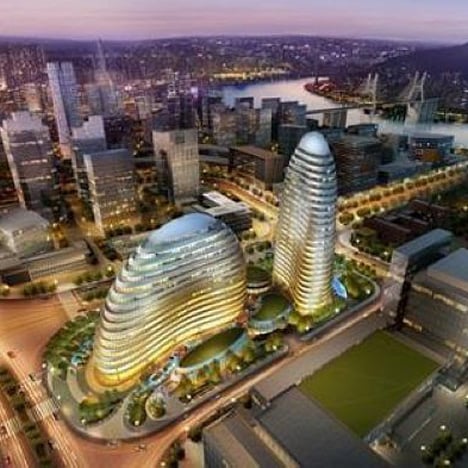Architectural Inspiration or Unlawful Imitation?
In the United States and other countries adhering to the Berne Convention (including China), copyright laws protect certain buildings and building design plans as “architectural works.” But while architectural works are protectable, it’s sometimes hard to distinguish those aspects of the building design that are worthy of copyright protection from those that are not because, for example, they are functional, well-known or standard elements used throughout the architectural industry, or otherwise not part of the “artistic” design. Also, architects often find inspiration for their own designs in other buildings, new and old, and in aspects of architecture that have been around for centuries. One issue that regularly surfaces is whether an architect or developer has unlawfully copied another’s design, or whether they have properly drawn inspiration from the world around them.

Here’s a real-life example of how hard it can be to draw the line between inspiration and imitation, and how the community culture can influence enforcement of intellectual property protection.
Building Imitation is the Sincerest Form of Flattery?
A trio of buildings designed by superstar architect Zaha Hadid is currently under construction in Beijing. The soon-to-be-finished project, called Wangjing SOHO, is made of glass-covered curves (meant to evoke fish and mountains) and has all the makings of an iconic landmark and feather in the cap of its developer, SOHO China. But builders in the city of Chongqing have already put a damper on SOHO China’s achievement by building a curiously similar project at the same time. Indeed, the Chongqing project may well be completed before Wangjing SOHO.
Did Hadid’s Beijing design merely “inspire” the Chongqing project or is the Chongqing project an improper copy? Take a look:
Not everyone will agree, of course, but one can see how some believe that the Chongqing project crosses the line from inspiration to improper copying of Hadid’s architectural design. Hadid and SOHO China apparently think so, as both have expressed their intent to take legal action to enforce their intellectual property rights.
China’s Copycat Culture
Architectural works are capable of protection under China’s copyright laws. But a copyright infringement case in China could be difficult for a variety of reasons, not the least of which is China’s “copycat culture” or “shanzhai.” Shanzhai culture is known primarily for the proliferation of knock-off cellphones and other relatively low-priced consumer items, but it is also alive and well in the higher-priced arenas of building development and architectural design. In fact, a new book is devoted to this cultural phenomenon, which the author calls China’s “duplitecture” movement. In researching this post, I learned that China is full of copycat buildings (like the White House), bridges (including London’s Tower Bridge), monumental structures (“Oriental Paris” in Hangzhou has an Eiffel Tower), and even whole villages and cityscapes (including “Manhattan” and an alpine village).
According to the copycats and “duplitects” that create these structures, their mimicry comes from a desire to celebrate China’s achievements (in mastering the skills needed to create these faithful reproductions) while at the same time laying a foundation for future architectural accomplishments. Not surprisingly, copycats almost exclusively copy buildings, cities and towns that are associated with wealth, luxury and success. They use these copies as a way to project what they wish to become. As one architect familiar with shanzhai “duplictecture” put it, copying is “a shorthand way of trying to become whatever it is you want to become.”
China’s architectural copycats are not alone in their thinking. While they may not go so far as wholesale endorsement of “duplitecture,” there are many in this industry—including architects and intellectual property scholars—who embrace imitation in architecture as an integral part of the creative process that promotes, rather than hinders, innovation and progress in the arts. Hadid herself said as much in her initial reaction to the Chongqing copycat building, when she stated that, so long as building clones display some innovation, “that could be quite exciting.” (She later added, however: “It is fine to take from the same well—but not from the same bucket.”) The developer of the Chongqing project echoed Hadid’s first reaction, as well as the duplitecture manifesto, when it responded to news reports of its “copycat” building by adding a new slogan for the project: “Never meant to copy—Only want to surpass.”
What do you think, is the Chongqing project too close to Hadid’s Beijing building for comfort?

